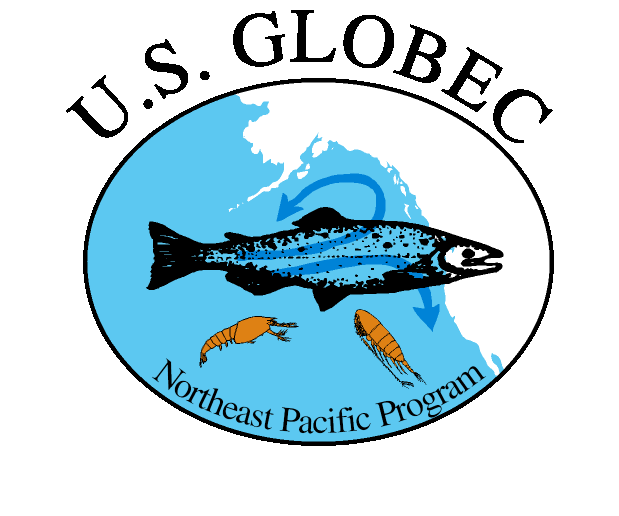
Requesting GLOBEC Contribution Numbers
Gateway to U.S. GLOBEC
Online Datasets
Click here for downloadable Logo images
![]()
National Science Foundation
![]()
Center for Sponsored Coastal Ocean Research
![]()
National Oceanic &
Atmospheric Administration
Maintained by:
Hal Batchelder
hbatchelder@coas.oregonstate.\edu
COAS
Oregon State University
Corvallis, OR 97331-5503
phone: 541-737-4500
FAX 541-737-2064
My Web Page
Last modified: 30 March 2009

Program in a Nutshell
(For additional meetings, click on the "Meeting Calendar" link on the left sidebar).
Goal:
To understand the effects of climate variability and climate change on the
distribution, abundance and production of marine animals (including
commercially important living marine resources) in the eastern North Pacific. To embody this
understanding in diagnostic and prognostic ecosystem models, capable of capturing the ecosystem response
to major climatic fluctuations.
Approach: To study the effects of past and present climate variability on the population ecology and population
dynamics of marine biota and living marine resources, and to use this information as a proxy for how the ecosystems of the
eastern North Pacific may respond to future global climate change. The strong temporal variability in the physical and
biological signals of the NEP will be used to examine the biophysical mechanisms through which zooplankton and salmon
populations respond to physical forcing and biological interactions in the coastal regions of the two gyres. Annual and
interannual variability will be studied directly through long-term observations and detailed process studies;
variability at longer time scales will be examined through retrospective analysis of directly measured and proxy data.
Coupled biophysical models of the ecosystems of these regions will be developed and tested using the process studies
and data collected from the long-term observation programs, then further tested and improved by hindcasting selected
retrospective data series.
Upcoming Meetings of Interest
Serving U.S. GLOBEC Northeast Pacific Data.
U.S. GLOBEC NEP
data are made available using a datasystem developed within the JGOFS (Joint Global Ocean Flux Study) program.
This database has been used extensively in the
U.S. GLOBEC Georges Bank program. Access to GLOBEC data is available by clicking
on the link
Gateway to U.S. GLOBEC Online Datasets located at left.